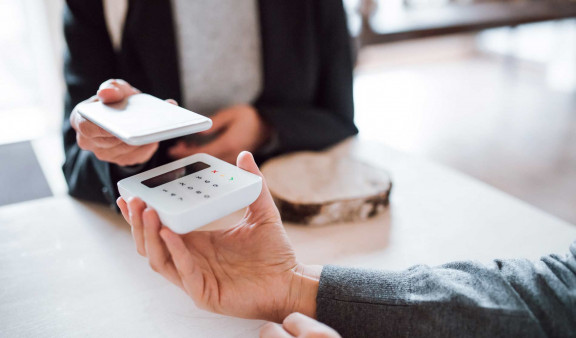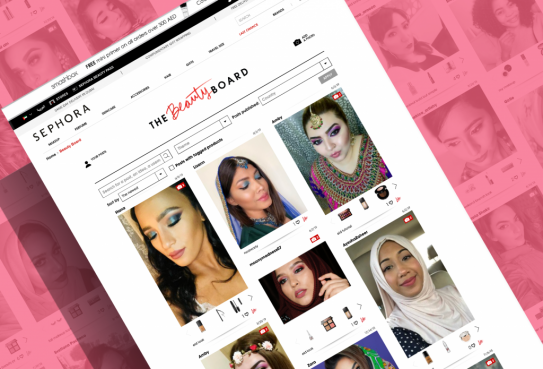
The ecommerce health and beauty makeover: rise of the millennials and social selling
Health and beauty have undergone a monumental make-over in the past few years – without a bronzer or yoga mat in sight.
The global wellness economy is now a $4.2 trillion market, according to the Global Wellness Institute, with personal care, beauty and aging making up a quarter of this.
Meanwhile, the cosmetics products market was valued at $532.43 billion in 2017 by Orbis and is expected to rise to $805.61 billion by 2023. Goldstein Research forecasts the Middle East cosmetics market to reach $32.2 Billion by 2025 due to a growing market in natural products, personalised products and services.
But these figures only tell half of the story. Never before has social influence been so instrumental in an industry’s growth, with millennials and influencers the driving force behind it.
The online beauty category among Internet Retailer’s Top 1000 retailers grew by almost 25 per cent in 2017 to reach more than $5billion in digital sales, with younger generations now buying 25 per cent more cosmetics than two years ago according to NPD.
Generation Y is disrupting traditional means of shopping, advertising and communication and setting the agenda. Brands within the health and beauty industries are having to evolve to keep up with the demands of the young consumers, meaning the spheres feel exciting and fresh, fuelling a constant stream of new customers.
Redbox has been implementing Magento sites for clients in the Health and Beauty sector for more than 10 years. See how its clients - Sephora, Latest in Beauty and Nahdi, have responded to the opportunities driven by this demographic.
Make it social
Millennials are finding people they can relate to online through a host of social channels and turning to influencers to help make their decisions of what to buy. This in turn has led to companies looking at new ways to reach their audiences.
YouTube, for instance, sees 1.5 million beauty videos uploaded each month, with beauty-related content generating more than 169 billion views in 2018 alone. Tutorials, reviews, and haul videos the tip of the iceberg.
This had led to 1.1billion sponsored video views in the same sector, generated by 3049 brands working with 2282 different beauty publishers and influencers in 2018.
Kylie Jenner’s Kylie Cosmetics made $420m in sales in 18 months without any traditional advertising, instead using her 100m plus followers on Instagram to engage with young buyers.
Huda Kattan, one of the best-known influencers in the Middle East, began her amazing journey giving make-up tutorials on a blog, before her huge following saw her named one of the ‘ten most powerful influencers in the world of beauty’ two years ago by Forbes. She is now estimated to be worth $550 million at the last count, boasts more than 30 million followers on Instagram and has her own cosmetics range, with no signs of slowing down.
Brands are getting personal both on and offline, with influencers and social media, in particular, being used to create smart two-way conversations and engage with consumers.
But while consumers are turning online to seek out new and exciting products, many still want to feel, touch and experience them before they purchase.
Make it conversational
The health and beauty industries are perfect examples of making digital and bricks and mortar work seamlessly together.
Few brands have reacted and embraced this changing space quite like Redbox client Sephora, which has dozens of stores across the world.
“Everything we do in social is reflective of the brand, mission and purpose: ‘Let’s Beauty Together’,” said Deborah Yeh, SVP of marketing and brand at Sephora in a recent Forbes article. “We’re believers in authentic two-way conversations with customers and we try to be thoughtful about the type of content we produce.”
Sephora has 18m followers on Facebook, 17 million on Instagram and more than a million subscribers on YouTube. They engage with predominantly Millenial consumers on multiple platforms - Twitter, Snapchat, Kik, Wishbone and Pinterest, with content tailored for the audience on each platform , such as live stories on Instagram and event coverage on Facebook and Snapchat.
The company partners with a myriad of micro and macro influencers who, on these platforms, show off Sephora’s products on a variety of skin tones and hair colours, to vastly different audiences.
Yeh’s philosophy also applies to the content its customers produce for the beauty brand. The Beauty Board, which resides on Sephora’s Dubai site, allows consumers to add photos of themselves with the ‘looks’ they have created, as well as the beauty products used. Its customers are providing product photography and reviews for the brand!

Sephora's Beauty Board
Make it convenient
Meanwhile, subscription boxes, like those offered by Redbox client, British beauty firm Latest in Beauty are essential for attracting those millennials who don’t have the time to go to a store. Consumers can create a profile of their own beauty preferences on its website and be sent a curated selection of products to try, or pick their own, at hugely discounted prices. If they like them, they can benefit from further discounts if they buy the bigger versions.

Curated subscription box by Redbox's client, Latest in Beauty
“There has always been a physical element to health and beauty and the part that the physical purchase journey plays in that, especially with beauty,” Latest in Beauty ecommerce and marketing director Dean Smith told us.
“People love smells, textures and immersive experiences so brands need to create an immersive online experience and bridge that gap to succeed - as well as offering unique reasons to shop online rather than in stores.
“There is also the challenge around the element of beauty being so personal to the individual. For example, traditionally make-up buying struggles online due to the need for it to be so tailored. With new innovations and thinking in the way customers can personalise this, it can now be done more frequently online,” said Dean.
Make it innovative
Personalisation is still key in the beauty and health industries and new technologies and innovations are playing a huge part in keeping tech savvy Millennials engaged.
Ecommerce start-up Boutiqaat inKuwait raised $45 million last year to develop a platform selling beauty and fashion products through its website and mobile apps. Innovative virtual boutiques are promoted by influencers who add their favourite products, allowing consumers to browse and buy the curated selections. The company manages the transactions but allows influencers to choose the products to promote.
Redbox customer and Saudi Arabian pharmacy retailer Nahdi uses Artificial Intelligence (AI) and Machine Learning to understand and target its customers with marketing campaigns that reward loyalty. Nahdi uses a more strategic analysis of consumer behaviour to better understand the effectiveness of its campaigns and react appropriately.
But again, Sephora stands out when it comes to innovation. The company partnered with Assi.st to develop a Facebook Messenger bot to book make-up appointments - completely powered by AI, which led to an increase in sales. The company also launched Sephora Virtual Artist, an Augmented Reality (AR) tool allowing customers to try on thousands of shades of lipstick, eyeshadow and other makeup products on their own face digitally. A feature called Colour Match uses AI to help customers find the right shade for their skin tone using an uploaded photo.
Modiface also created the first in-store virtual make-over – “Tap and Try” - in Sephora stores, giving consumers a fully-responsive AR experience. This is something Charlotte Tilbury has also rolled out in a Magic Mirror format more recently.
Embrace technology to ‘make it’ going forward
So what does this all mean for the future of ecommerce and the rise of the millennials in the health and beauty industries? It’s an exciting time for brands in these sectors who are leading the way in how they communicate and engage with their consumers.
Expect more innovation and tech, as companies attempt to keep up with the demands of the millennials. Online, mobile and in-store experiences will keep the seamless connection between digital and bricks and mortar growing. Improvements with logistics and cross-border ecommerce will help these spheres flourish further.
Latest in Beauty’s Dean Smith told Redbox: “It’s a changing landscape. Customers are becoming savvier and expecting different experiences. What is really exciting is how fast consumers are adopting online for their beauty purchases. There is a clear move towards speed and convenience and of course subscription services, and this works perfectly for the Latest in Beauty model.”
Oliver White, head of ecommerce at Sephora also expects to see more in the way of AR. He told Redbox: “I’m excited about the future possibility of AR and the idea of virtual try on in the ecommerce sphere. It’s already been pioneered by Sephora in the US, but I think AR has huge potential to remove the friction that comes from not being able to try before you buy – especially in make-up.
“Buying cosmetics, something you put on your skin, is quite an intimate and personal experience. Consumers want to test what a product looks and feels like on their skin, they want to match shades to their skin tones. We have to create a digital experience that moves much closer towards the physical experience.”

Sephora's Augmented Reality "Try-On" App
As one of the top Magento partners and one of the few awarded Magento Global Elite Partner status, Redbox has helped some of the world’s most iconic brands digitally transform their businesses – including Sephora, Latest in Beauty, CS Group, Elemis and Nahdi.
We can draw on this knowledge and experience to advise Health & Beauty retailers on the key areas to consider to help drive their business forward and achieve multichannel success.
- Partner with influencers who can promote products to millennials through their various social channels.
- Ensure you are active and pro-active on the right platforms to engage in two-way conversations with your customers.
- Find ways to make digital - and bricks and mortar – work seamlessly together. Let consumers learn about products online but experiment with them instore, for instance.
- Think millennial: Ensure your apps and mobile experiences keep up with the demands of the tech savvy consumers.
- Don’t sit still, look for new innovations and tech that will help you engage and reach your audiences in different ways.